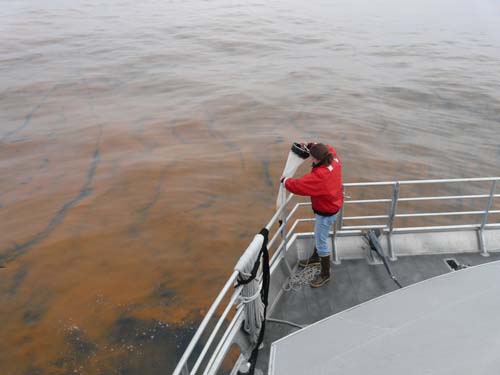Harmful Algal Blooms (HABs) generally occur when algae (either macroalgae — seaweed — or microalgae — phytoplankton) produce toxic or negative effects on marine ecosystems, wildlife, human health and global economies.
No one knows exactly why blooms occur or why some species release toxins.
Scientists hypothesize that there are different reasons why algae species release toxins, including to:
- Acquire or detoxify certain nutrients in the environment;
- Protect the algae from grazers such as krill and anchovies;
- Prevent or minimize the growth of other algae competing for the same resources.
Some scientists believe that the toxins are natural byproducts of the algae’s metabolism and are helpful enough that they have not been eliminated by evolutionary processes — so the toxins may have no “function” at all.
It’s difficult to say which explanation is correct; the explanation could be a combination of factors.
To determine whether a bloom is harmful, scientists generally look for three things:
- Presence of the organism through cell counts and DNA sampling;
- Presence of a toxin;
- Harm or impact on the ecosystem, economy and/or human health.
In looking for these answers, researchers can start to identify whether a bloom is harmful or not and — if it is — they can ask more specific questions regarding cell abundance levels, location, distribution and impacts.
In the case of a red tide, researchers acknowledge that there is a large bloom of dinoflagellates (almost all “red tides” are caused by dinoflagellates), but they cannot consider it a HAB event until there is noticeable harm being done to the environment. Usually the first impact is seen in sick pelicans or dead sea lions, which is an indication that there is a harmful bloom nearby.

